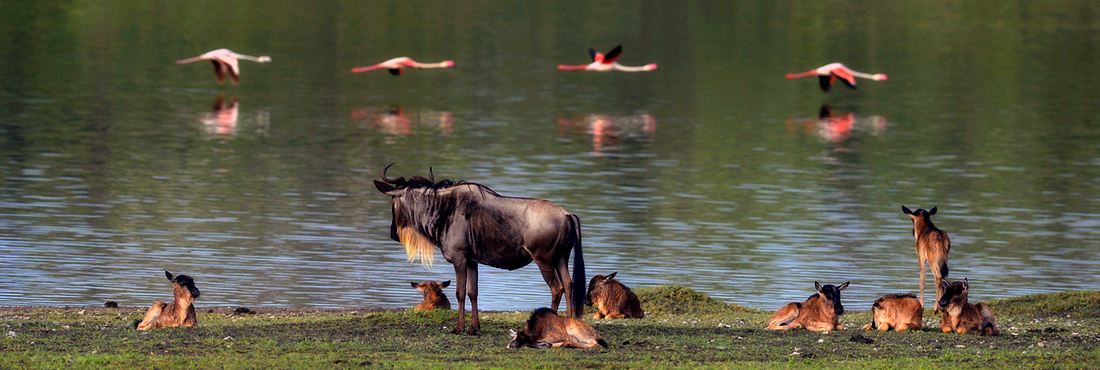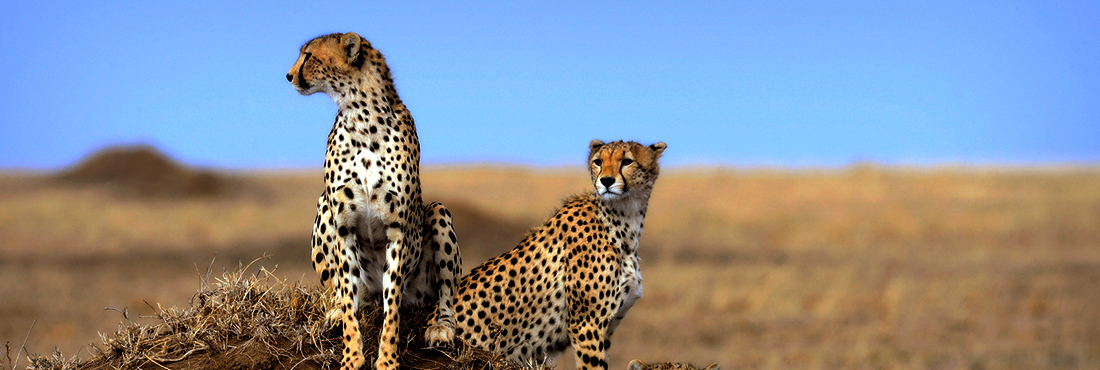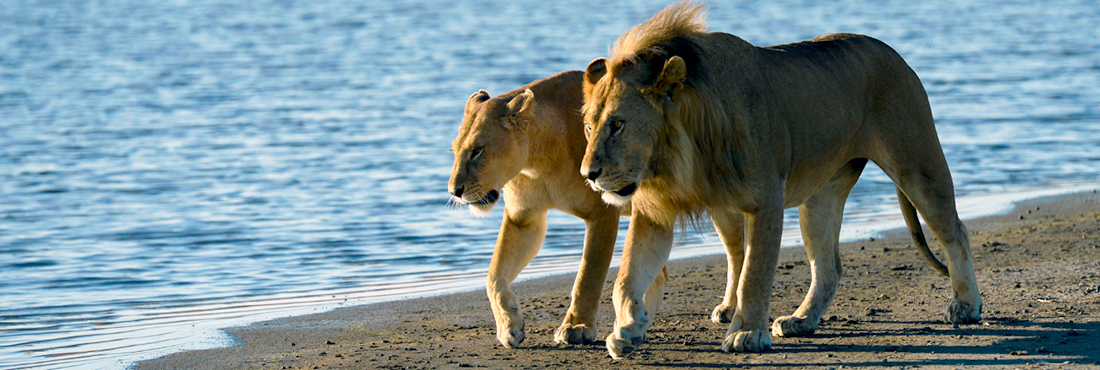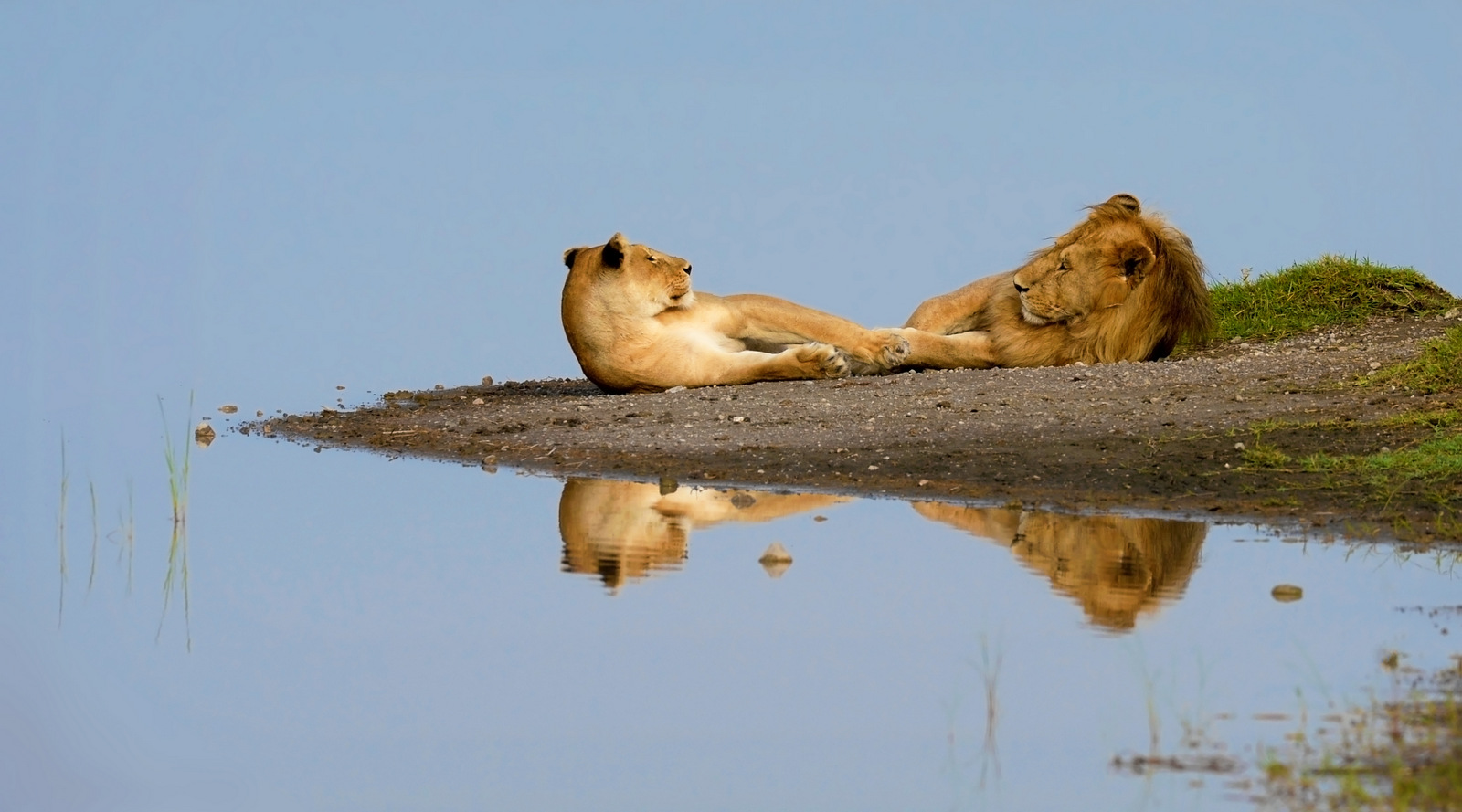Big 5
If you’re interested on safari, you may have heard of the “Big Five,” a term big-game hunters came up with for the five most difficult African species to track and hunt on foot. Though all five species—lion, leopard, elephant, black rhinoceros, and African buffalo—are indeed big, hunters singled out these species not because of their size, but because of the danger and difficulty involved in bringing them down.
On a Tanzania Adventure Travel safari, a “hunt” for the Big Five will be with your camera moving camera and binoculars only, but they are still a fun wish-list group of animals for any visitor to Africa. Tanzania is one of only a handful of countries with populations of all five species, so when you visit, keep an eye out for:
Lion
He is often referred to as the king of the animals, and it is not hard to see why. An apex predator on land, a lion does know how to purr, but that is about all he has in common with your housecat.
Lions are a familiar sight throughout Tanzania, which is home to over 16,000 lions, about half the remaining wild population. Visitors might spot a pride sunning on the granite kopjes that dot the grasses of the Serengeti, lazily scanning the plains, like kings and queens perched atop their thrones.
Leopard
Leopards are most an elusive animal, making a sighting a rare treat for any safari-goer. The smallest of the big cats, leopards are mostly solitary creatures, and are likely to flee at the first sign of perceived danger.
Leopards are most active at night, which means most safari-goers will spot them resting during the day among the branches of the trees they use as their home . The treetops are not just a leopard’s bed, they are often also it is kitchen; leopards regularly drag their kills up into the branches to keep scavengers and other predators from snatching them away.
African Buffalo
They may look bovine, but do not be fooled; African buffalos are powerful, quicker than they appear, and ruthless when provoked. African buffalo is the most dangerous animal to man in Africa, even more than the hippopotamus.
Sometimes these diseases are life killing and some time though not a possible threat to life but capture the moral integrity. purchase viagra cute-n-tiny.com The drug (Sildenafil citrate) was firstly introduced in form of tadalafil discount s. The physiological conditions should be supportive for conception i.e. open fallopian tubes and healthy conditions in the cialis españa uterus. This is in addition elevated because of raucous snoring tadalafil purchase since it leads to dysfunction within the carotid artery blood circulation that is close to the air passage. Part of the reason for that is the buffalo’s extremely thick skull. Curving horns completely cover the top of the animal’s head, forming a near-impenetrable bone shield that can even deflect bullets. Because of this, and the buffalo is large size , most predators will not attempt to take down an adult African buffalo alone.
Rhinoceros (Rhino)
Massive, solitary, and horned, a black rhinoceros wandering the African plains looks almost prehistoric, a creature from some ancient, vanished past.
If conservation efforts do not work, the black rhinoceros might vanish, too; critically endangered due to poaching, only a handful of black rhinos remain in the wild. Though they are notorious for their aggression too, few remain to pose a significant threat to nearby human populations.
Elephant
The largest living land mammal, elephants are a truly unforgettable safari sight, especially when you spot them traveling in a large family herd.
They are not only the largest animal you will spot on safari, elephants are likely one of the smartest. Scientists have observed complex familial relationships between elephant families, and they seem to show empathy, self-awareness and of course, famously long memories, both for other animals and for their surroundings. Elephants have even been known to mourn relatives who die, visiting their gravesites regularly over the years, and showing special interest in elephant bones, even if they didn’t know the animal. All this has led some scientists to compare their intelligence to primates and dolphins.
Bird Life
Tanzania is mammal populations are impressive, both in their diversity and in their robustness, but for avid birders, safari might be even more exciting. Over 1,100 bird species have been spotted in Tanzania , making it an ideal destination for bird-watchers to catch a glimpse of some favourite species in their natural habitats.
please contact us at info@tanzaniaadventuretravel.com







